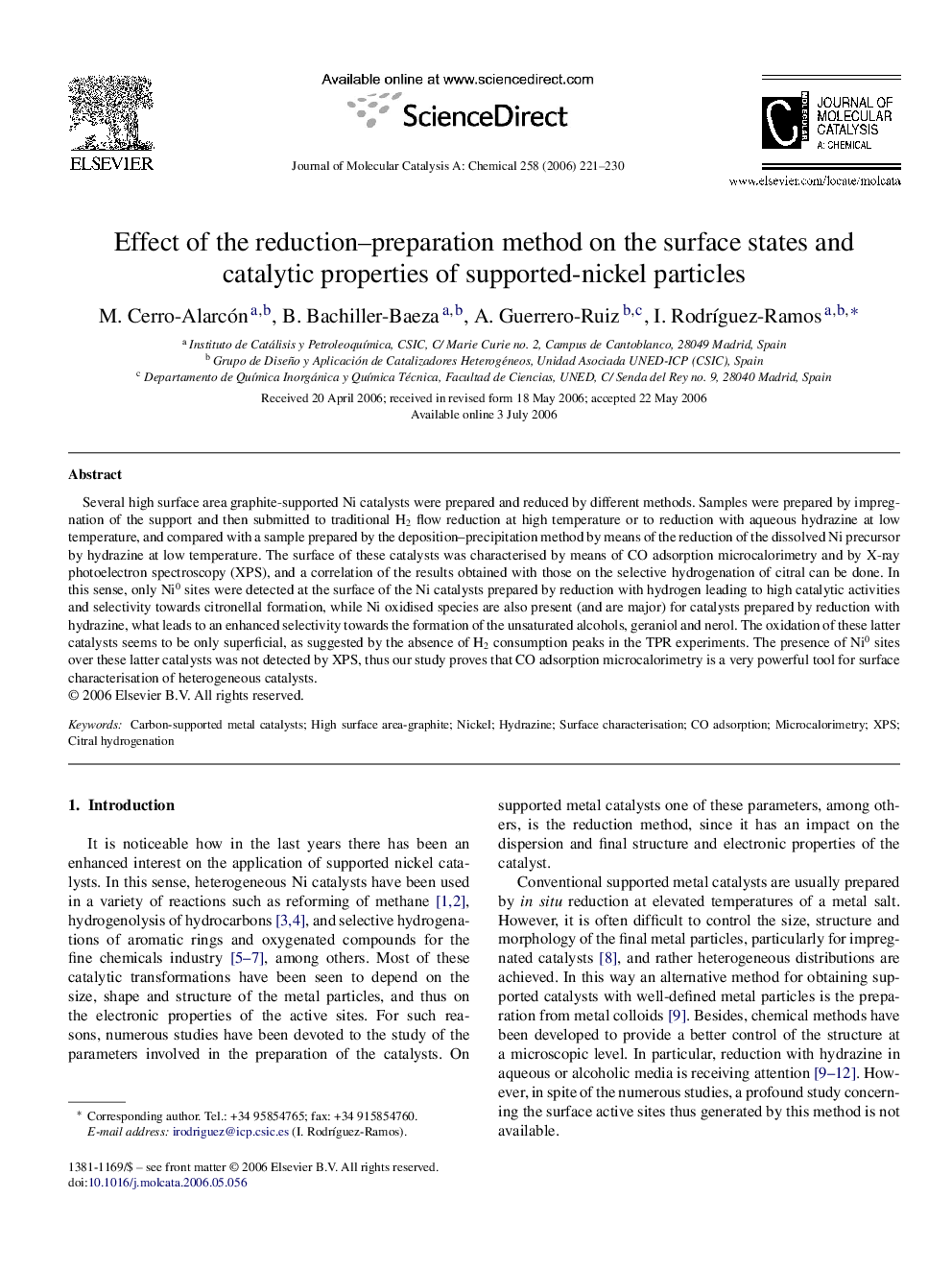| کد مقاله | کد نشریه | سال انتشار | مقاله انگلیسی | نسخه تمام متن |
|---|---|---|---|---|
| 68887 | 48525 | 2006 | 10 صفحه PDF | دانلود رایگان |

Several high surface area graphite-supported Ni catalysts were prepared and reduced by different methods. Samples were prepared by impregnation of the support and then submitted to traditional H2 flow reduction at high temperature or to reduction with aqueous hydrazine at low temperature, and compared with a sample prepared by the deposition–precipitation method by means of the reduction of the dissolved Ni precursor by hydrazine at low temperature. The surface of these catalysts was characterised by means of CO adsorption microcalorimetry and by X-ray photoelectron spectroscopy (XPS), and a correlation of the results obtained with those on the selective hydrogenation of citral can be done. In this sense, only Ni0 sites were detected at the surface of the Ni catalysts prepared by reduction with hydrogen leading to high catalytic activities and selectivity towards citronellal formation, while Ni oxidised species are also present (and are major) for catalysts prepared by reduction with hydrazine, what leads to an enhanced selectivity towards the formation of the unsaturated alcohols, geraniol and nerol. The oxidation of these latter catalysts seems to be only superficial, as suggested by the absence of H2 consumption peaks in the TPR experiments. The presence of Ni0 sites over these latter catalysts was not detected by XPS, thus our study proves that CO adsorption microcalorimetry is a very powerful tool for surface characterisation of heterogeneous catalysts.
Only Ni0 sites were detected at the surface of the Ni/graphite catalysts prepared by reduction with hydrogen leading to high selectivity towards citronellal formation, while Ni oxidised species are also present (and are major) for catalysts prepared by reduction with hydrazine, what leads to an enhanced selectivity towards the formation of the unsaturated alcohols, geraniol and nerol. Figure optionsDownload as PowerPoint slide
Journal: Journal of Molecular Catalysis A: Chemical - Volume 258, Issues 1–2, 2 October 2006, Pages 221–230